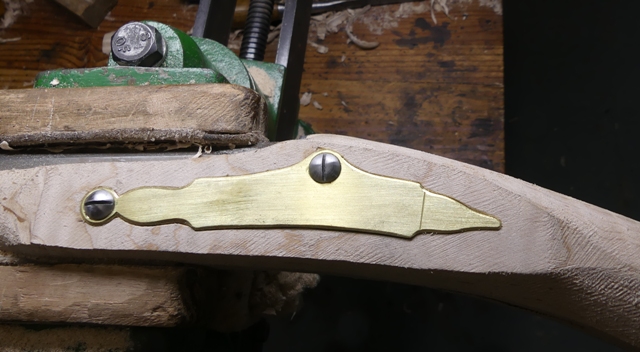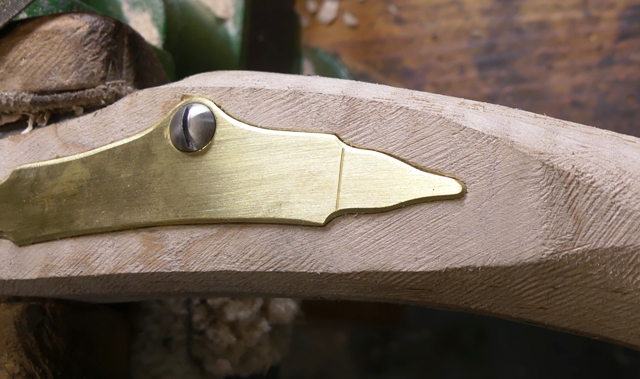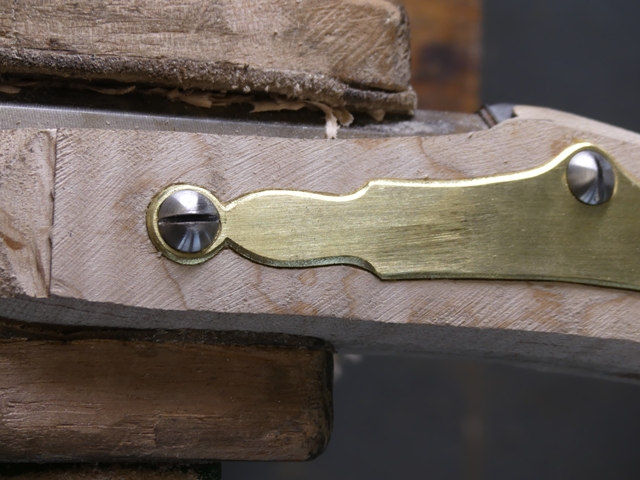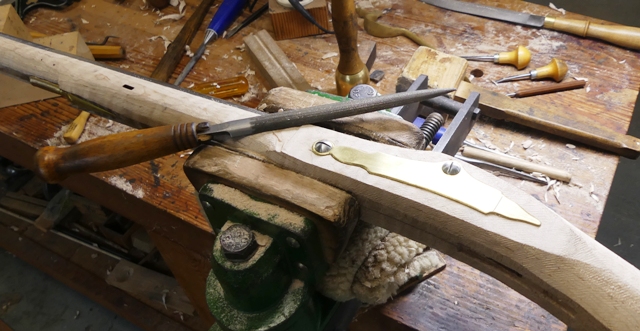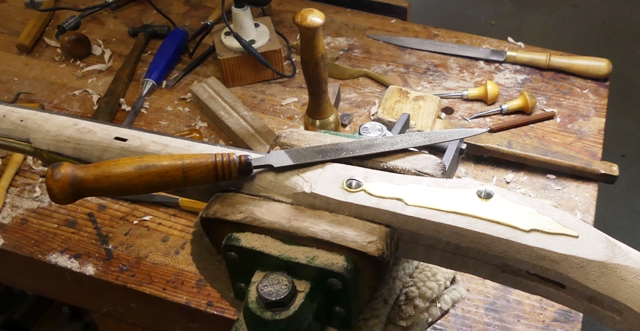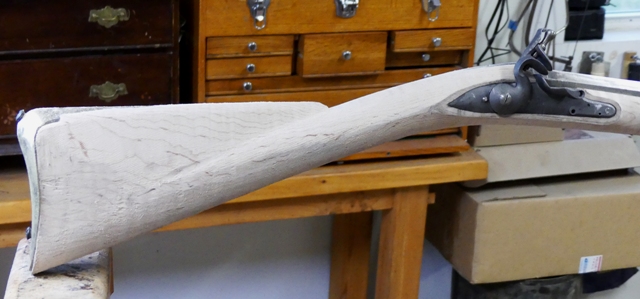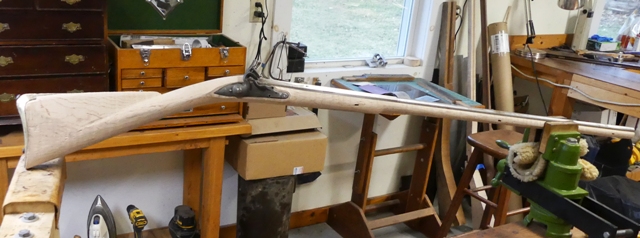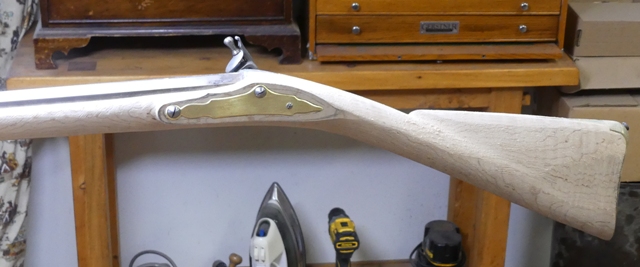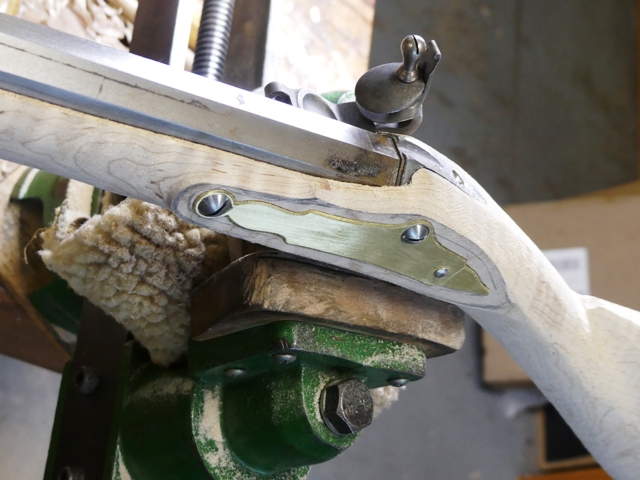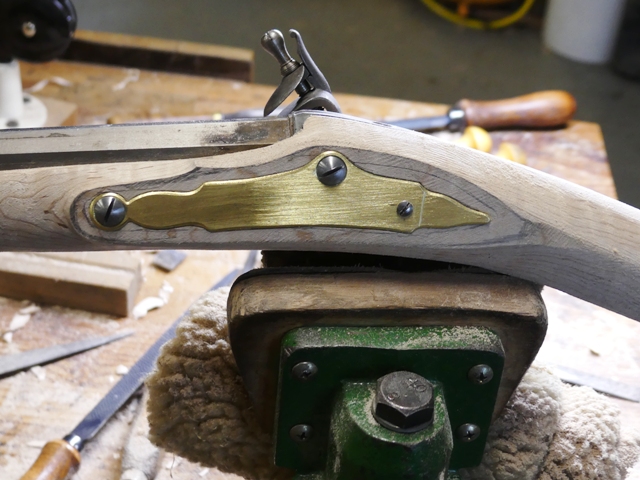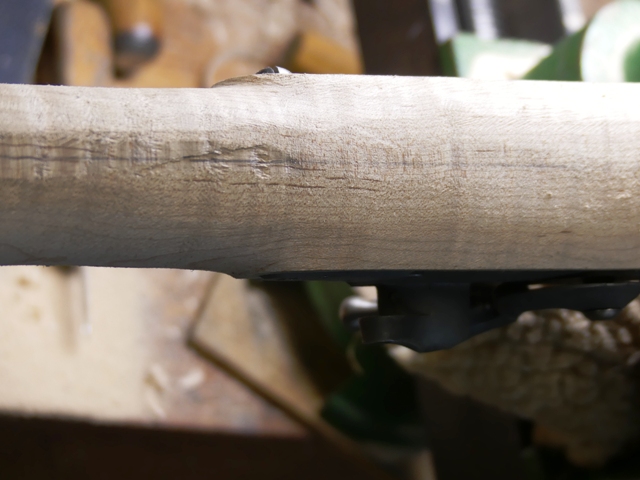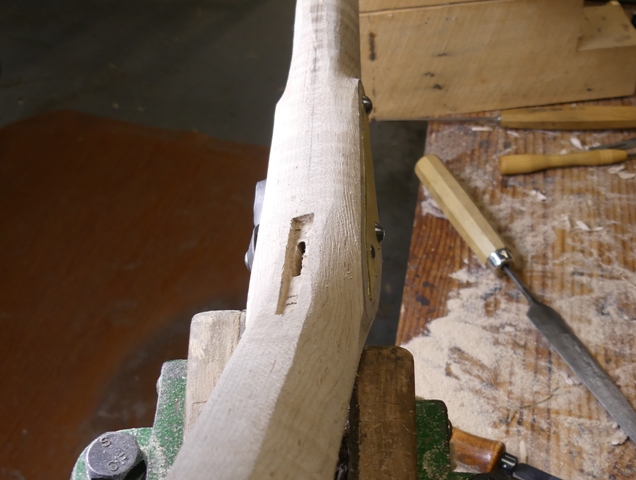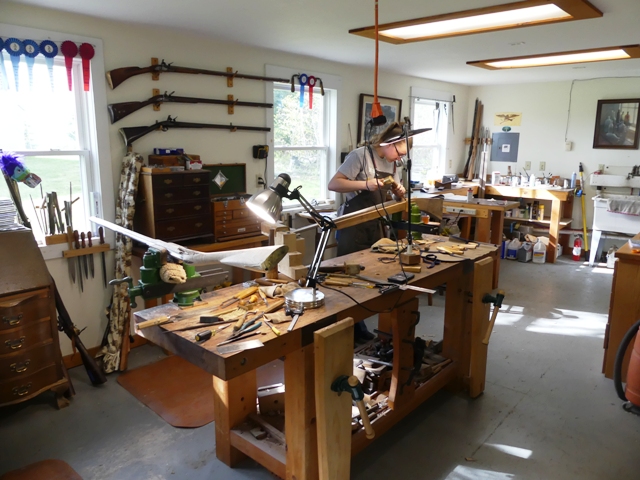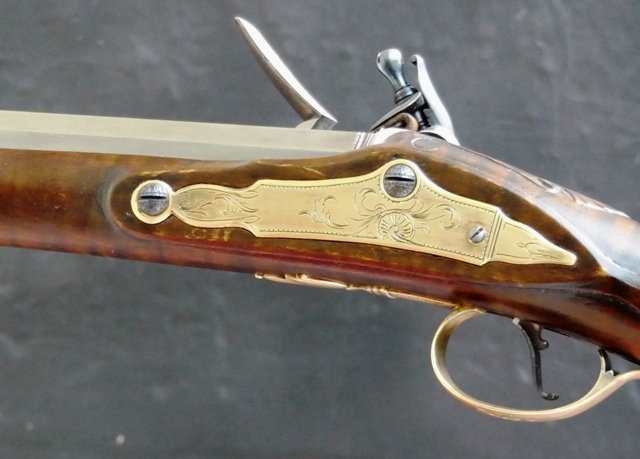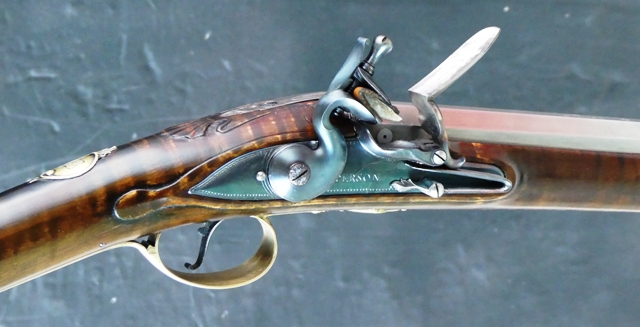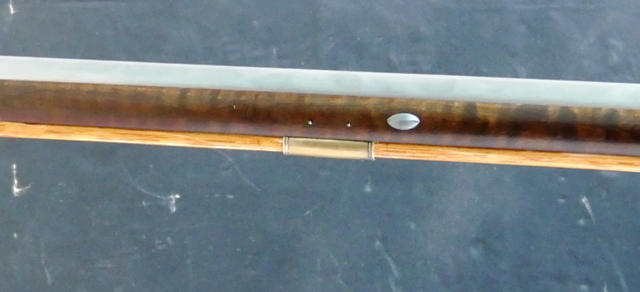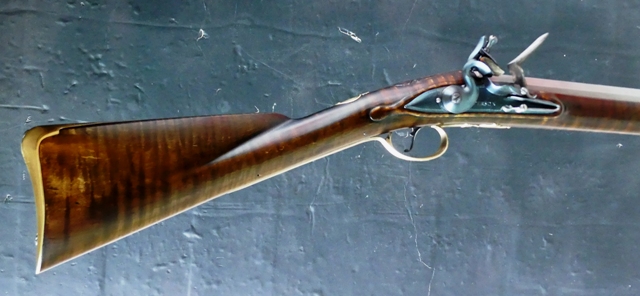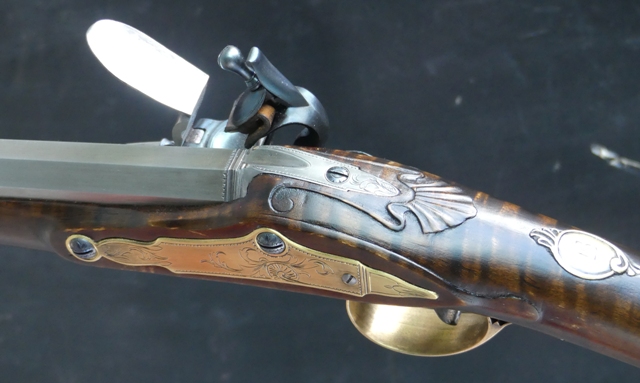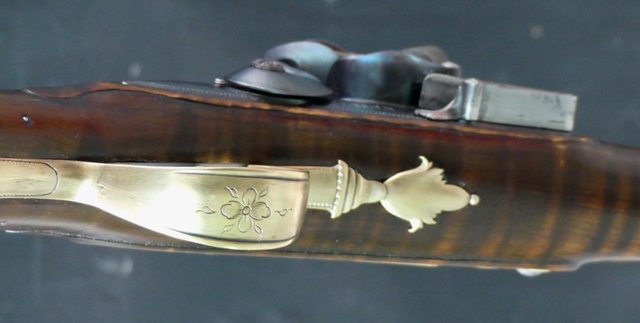- Joined
- Nov 26, 2005
- Messages
- 5,224
- Reaction score
- 10,884
Hi Folks,
I haven't posted much recently because the Braintree Hill shop is very busy. We recently worked over a bunch of Pedersoli and Miroku Brown Besses, some requiring locks to be rebuilt. The main objective was to engrave regimental markings but quite a few needed serious lock work to function safely and reliably. Anyway, we did the engraving.


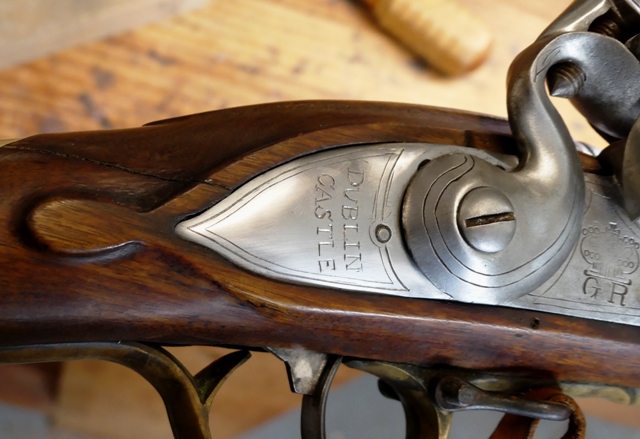
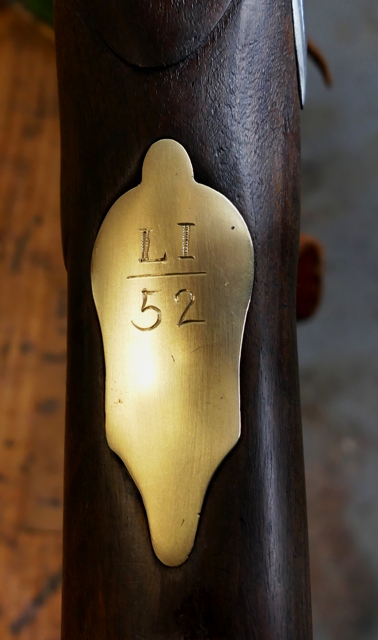
And we fixed the locks and guns in time for "Battle Road".
I am making a gun for a friend and client that copies a good quality English fowler but is modified using a maple stock and rifled barrel. It is a fantasy piece unlike most of my work. It will copy the design of this original gun.
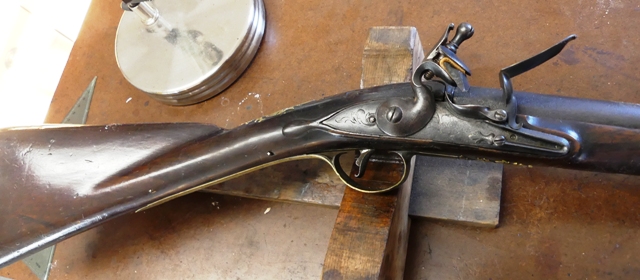
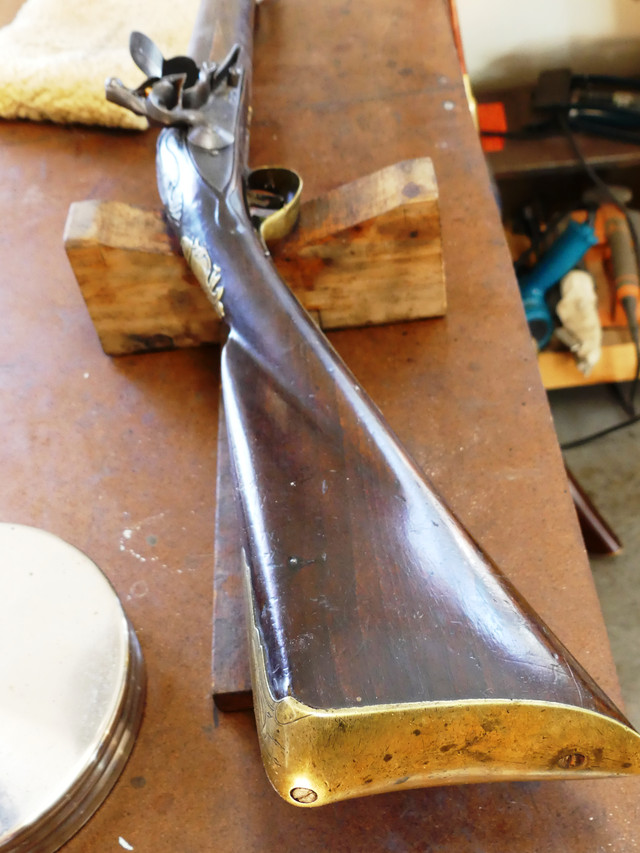
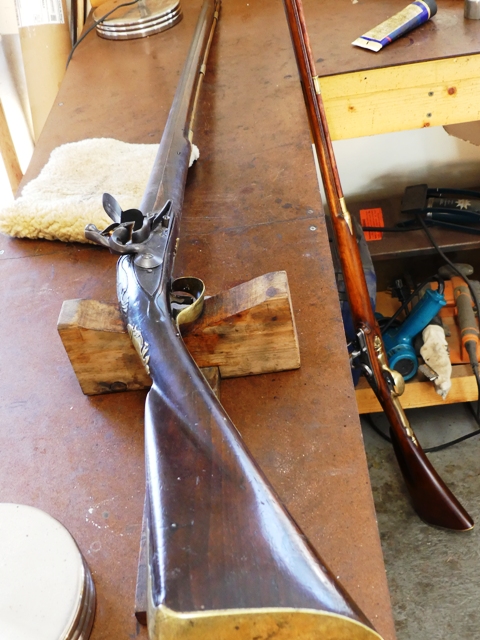
However, it will be a little more robust allowing for a strong full 3/8" diameter ramrod. The owner will hunt elk with it as well as deer. The barrel is octagon to round, 54 caliber, and 42" long by Rice. The lock is a Chamber's Colonial Virginia lock. The brass butt plate is the "Dubbs" longrifle plate sold by TOW but modified to look like ones commonly used on English fowlers. The stock is an exceptionally figured blank of hard maple. It has a humped standing breech and barrel keys.


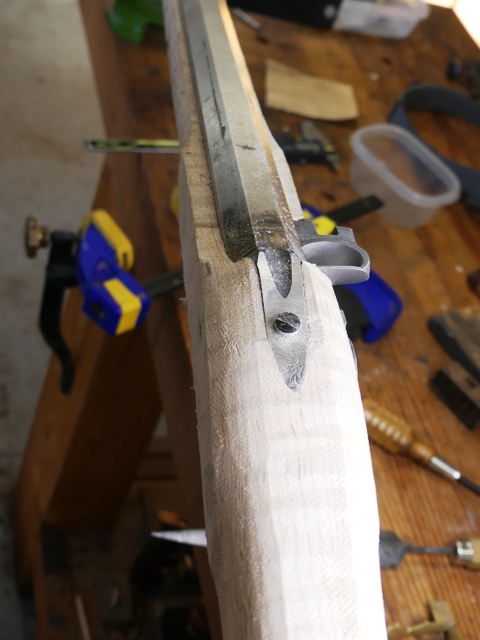
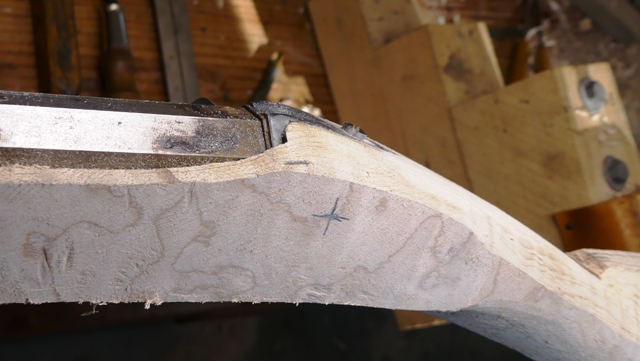
I've posted many times about inletting these kinds of buttplates but will do so again. They are not hard but a little fiddley. I first simply trace the profile of the plate on the stock marking the location of the first shoulder.

Then I trim the stock on the bandsaw to my tracing and accurately cut off the first shoulder with a Japanese hand saw.
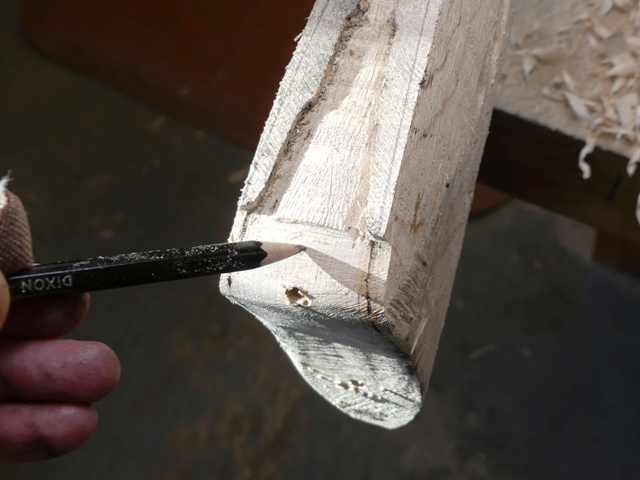
With that shoulder cut away, I can lay the tang down on the stock and trace the outline of the first part of it. I inlet it slowly from heel to end laying it down gradually into the stock.
Because the tang gets progressively smaller toward the front, you can gradually move the plate forward on the stock until it is positioned correctly and all edges are tight against the stock.
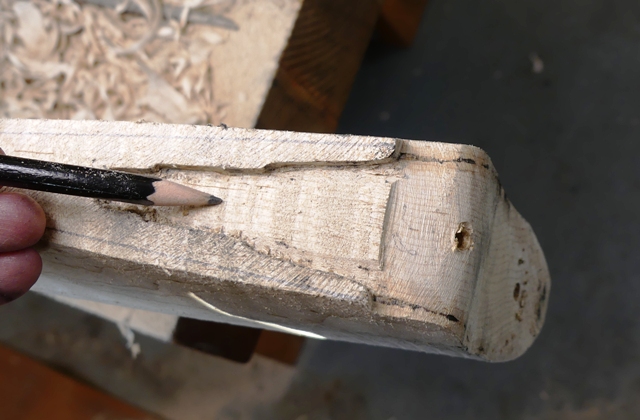
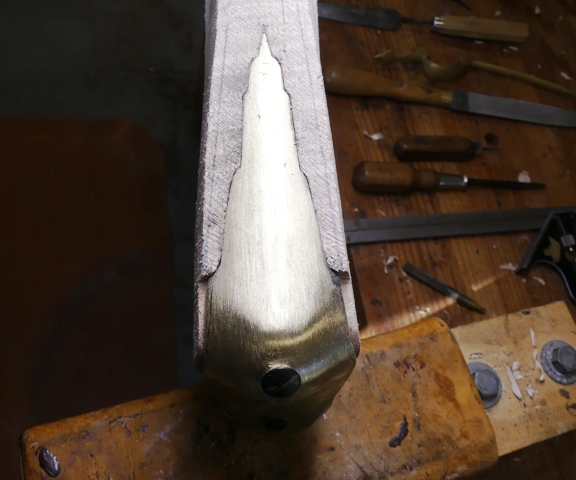
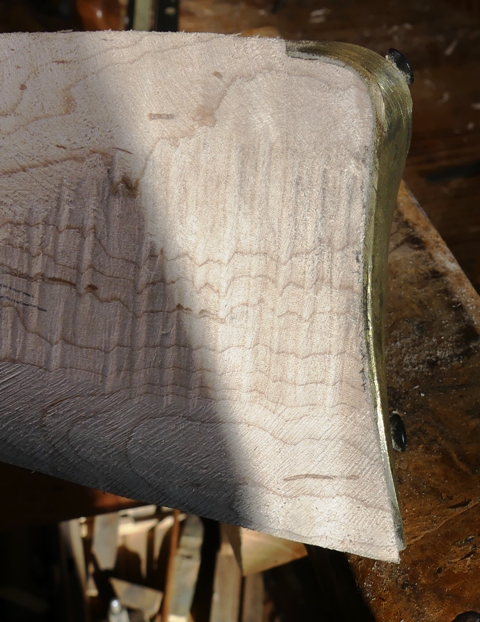
It is not hard but you need to go slow and use some sort of inletting black or smoke.
dave
I haven't posted much recently because the Braintree Hill shop is very busy. We recently worked over a bunch of Pedersoli and Miroku Brown Besses, some requiring locks to be rebuilt. The main objective was to engrave regimental markings but quite a few needed serious lock work to function safely and reliably. Anyway, we did the engraving.




And we fixed the locks and guns in time for "Battle Road".
I am making a gun for a friend and client that copies a good quality English fowler but is modified using a maple stock and rifled barrel. It is a fantasy piece unlike most of my work. It will copy the design of this original gun.



However, it will be a little more robust allowing for a strong full 3/8" diameter ramrod. The owner will hunt elk with it as well as deer. The barrel is octagon to round, 54 caliber, and 42" long by Rice. The lock is a Chamber's Colonial Virginia lock. The brass butt plate is the "Dubbs" longrifle plate sold by TOW but modified to look like ones commonly used on English fowlers. The stock is an exceptionally figured blank of hard maple. It has a humped standing breech and barrel keys.




I've posted many times about inletting these kinds of buttplates but will do so again. They are not hard but a little fiddley. I first simply trace the profile of the plate on the stock marking the location of the first shoulder.

Then I trim the stock on the bandsaw to my tracing and accurately cut off the first shoulder with a Japanese hand saw.

With that shoulder cut away, I can lay the tang down on the stock and trace the outline of the first part of it. I inlet it slowly from heel to end laying it down gradually into the stock.
Because the tang gets progressively smaller toward the front, you can gradually move the plate forward on the stock until it is positioned correctly and all edges are tight against the stock.



It is not hard but you need to go slow and use some sort of inletting black or smoke.
dave




